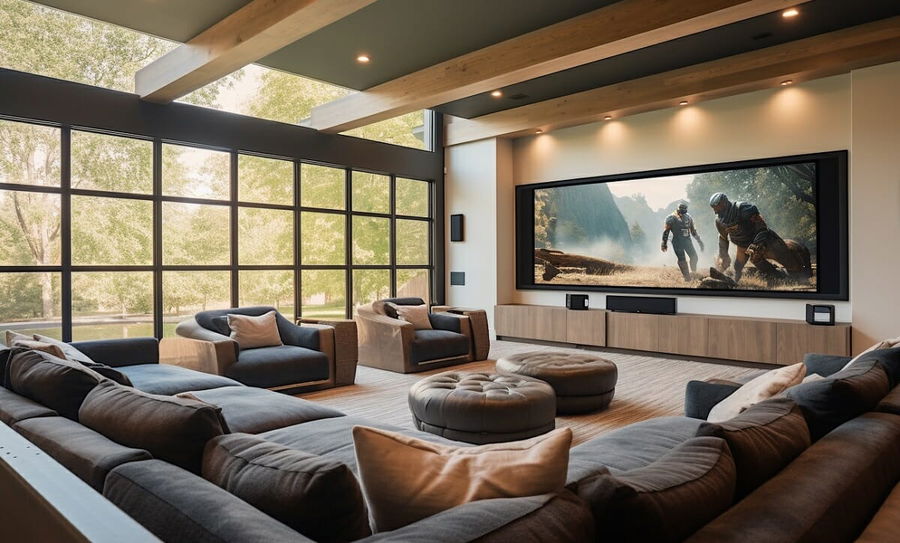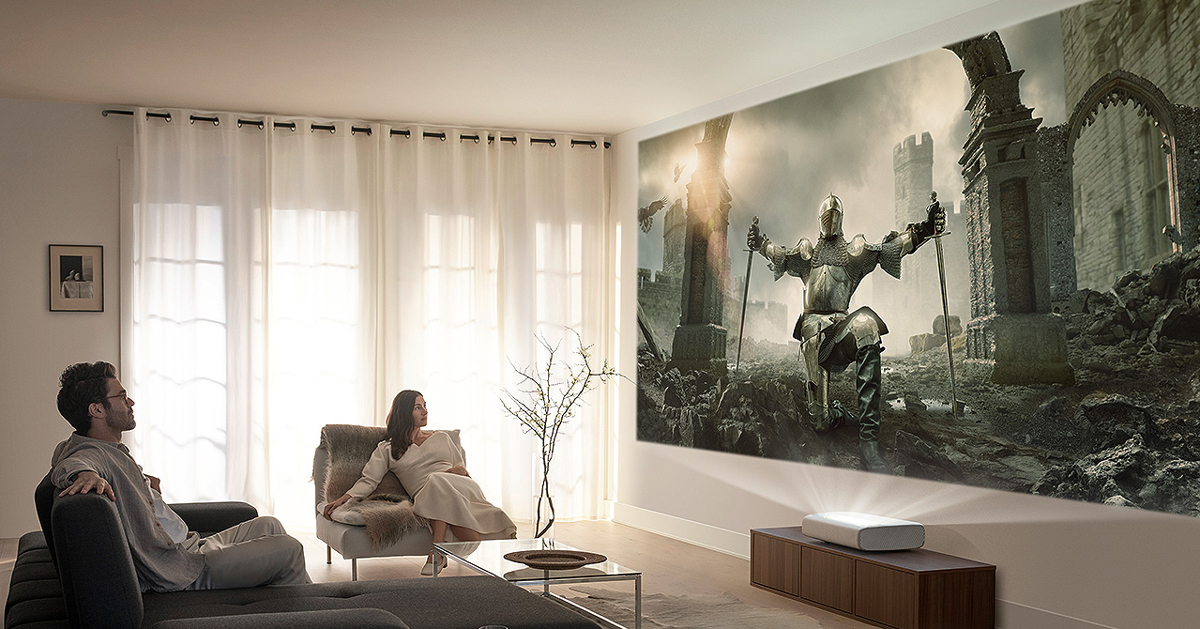Home Theater 101: Whatever You Need to Know for a Cinematic Experience in the house
Producing a home theater that rivals the motion picture experience of an industrial theatre includes careful factor to consider of multiple components, including display choice, sound systems, and area layout. Each element plays a crucial function in accomplishing the desired ambiance and capability. Whether you are considering the suitable display dimension or the intricacies of surround noise, recognizing these basics is crucial. As we explore these vital elements, it ends up being evident that the selections made can substantially affect your overall watching experience, leaving one to contemplate exactly how these choices will shape your individual movie theater.
Selecting the Right Screen
When establishing up a home theater, selecting the appropriate screen can make or damage the seeing experience - tampa home theater. The display offers as the focal point of your arrangement, influencing image quality, seeing angles, and total aesthetic. Key variables to take into consideration include screen dimension, kind, and resolution
Initially, determine the proper display dimension based on your room measurements and seating distance. Next, choose between numerous screen kinds, such as fixed-frame, motorized, or retractable screens, each offering distinct benefits.
Resolution is an additional important factor. For a genuinely immersive experience, consider a screen developed for 4K or perhaps 8K content, making sure intensity and clearness. In addition, think about the display's gain, which affects illumination and comparison; a greater gain can boost illumination in well-lit spaces, while a lower gain might be better for darker environments.
Picking Audio Equipment
Audio devices is an important component of any type of home cinema system, considerably improving the total watching experience. The selection of audio gear can identify the depth, clarity, and immersion of noise, crucial for producing a cinematic ambience.
When choosing audio tools, take into consideration a surround stereo, which commonly consists of a receiver, multiple speakers, and a subwoofer. A 5.1 or 7.1 network system is suggested, where the very first number stands for the speakers and the second the subwoofer, providing an immersive soundscape. The receiver is the heart of the system, managing sound and video signals, and need to support modern formats like Dolby Atmos for an improved spatial experience.
Quality speakers are essential; search for designs that provide a balanced noise account with good bass action. Floor-standing audio speakers can create richer noise, while bookshelf alternatives conserve space. In addition, consider wireless choices for convenience of installment, although wired systems usually provide premium performance.

Optimal Seating Plans
Developing a suitable home movie theater experience hinges dramatically on ideal seating setups. The plan of seats plays a critical role in both convenience and viewing quality, straight impacting the overall motion picture experience.
First, consider the display size and seeing distance. A typical guideline is to position seats at a range approximately 1.5 to 2.5 times the angled size of the display. This makes sure an immersive experience without straining the eyes.
Following, altitude is essential. If your seating is in a tiered layout, the back rows should be greater than the front to stay clear of blockages. For flat seating, ensure that the front row is not too close to the screen, which everybody has a clear line of view.
Moreover, take into consideration the arrangement in terms of social dynamics. Team seats can improve the common experience, while individual seats may be favored for personal watching.

Lastly, prioritize comfort with ergonomic seats that supports extended viewing periods. Incorporating recliner chairs or supported seats can significantly improve the experience, making the home movie theater a preferred location for both entertainment and leisure.
Lighting and Atmosphere
Effective lights and setting are crucial parts of a properly designed home movie theater, as they significantly affect important site the checking out experience. The right lights can enhance the cinematic feel, while bad selections can diminish it. For ideal outcomes, think about a split lighting approach that includes ambient, task, and accent lights.
Ambient lighting offers basic illumination, guaranteeing that the room is not entirely dark, which can stress the eyes. Dimmer switches are extremely suggested, permitting changes based on the content being seen. Job lighting, such as wall sconces or floor lights, uses useful lighting for tasks like reading or navigating the space without interfering with the overall atmosphere.
Accent lighting can be used to highlight architectural functions or create centerpieces, including depth and interest to the area. LED strip lights behind screens or along racks can give a subtle glow that enhances the aesthetic experience without overwhelming the customer.

Wiring and Installation Tips
A well-planned circuitry setup is crucial for attaining optimum performance in your home movie theater system. Proper electrical wiring not only makes certain top quality sound and video clip signals yet also boosts the total visual of your room. Begin by drawing up your layout, recognizing where each component will be placed, including your display, speakers, and receiver.
When selecting wires, prioritize premium, suitably gauged circuitry to minimize signal loss. HDMI cords must be used for video connections, while speaker cord ought to match the requirements of your speakers and amplifier. Choose in-wall rated cables to abide with safety and security requirements and maintain a tidy look.

Verdict
In summary, producing a phenomenal home cinema experience calls for mindful factor to consider of various components, including screen selection, audio devices, seating plans, illumination, and circuitry. By prioritizing these variables, a cinematic environment can be efficiently replicated, permitting for immersive seeing experiences that equal standard cinema setups.
Creating a home movie theater that equals the motion picture experience of a commercial theatre includes cautious factor to consider of several parts, consisting of display selection, sound systems, and room format.When establishing up a home movie theater, choosing the right screen can make or damage the watching experience. Next, select in between various display kinds, such as fixed-frame, motorized, or retracting screens, each offering distinct advantages. For a really immersive experience, take into consideration a display created for 4K or even 8K web content, guaranteeing intensity and clearness.In summary, creating a phenomenal home theater experience calls for careful consideration of numerous aspects, consisting of display choice, audio equipment, seating plans, illumination, and electrical wiring.